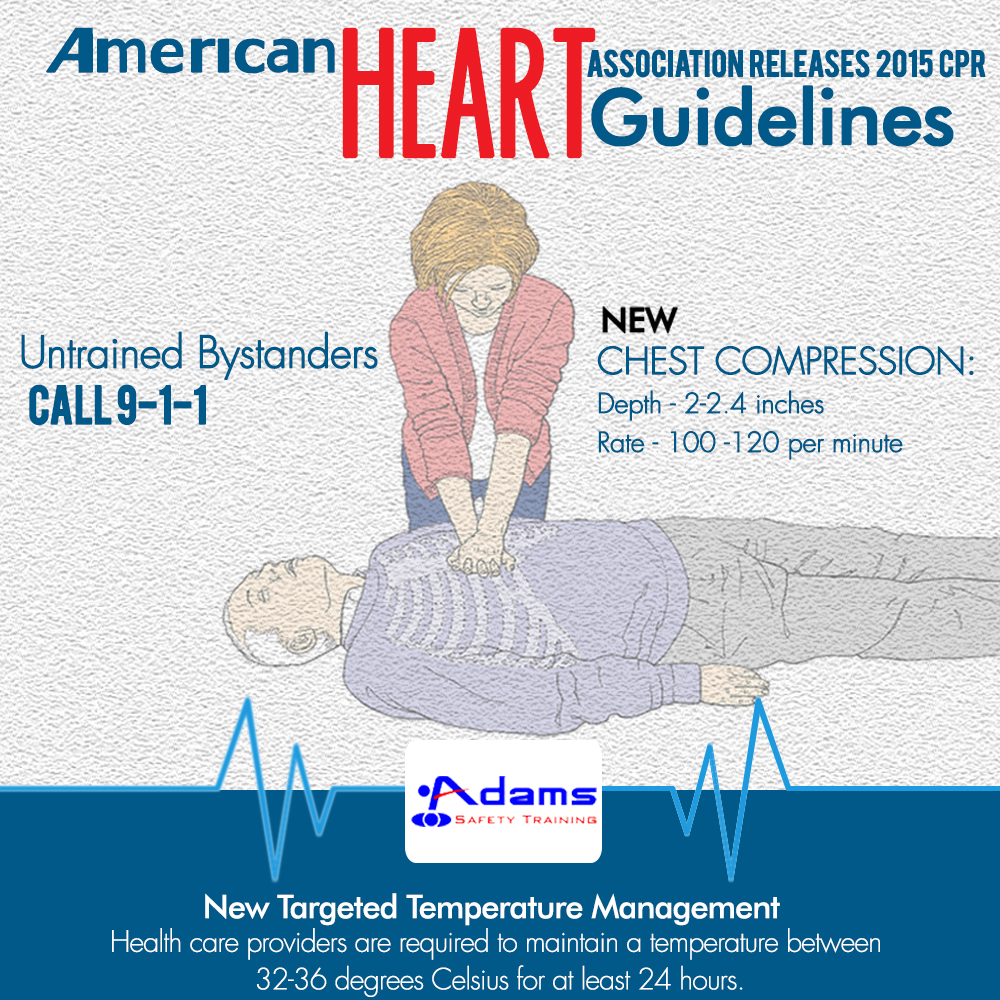The American Heart Association (AHA) has released the “2015 Guidelines Update for Cardiopulmonary Resuscitation (CPR) and Emergency Cardiovascular Care (ECC)” on 15th October 2015. The latest AHA guidelines, published in Circulation: Journal of the American Heart Association, highlight the importance of quick action and CPR training in cardiac emergencies. The new CPR guidelines place importance on immediate action taken by bystanders/rescuers to increase survival chance of cardiac arrest patients.
Some of the changes in the 2015 CPR and ECC guidelines are:
• The new compression rate is 100–120 per minute; previously it was “at least 100” and the new compression depth is 2–2.4 inches for adults and adolescents.
• New targeted temperature management has been introduced which will help prevent brain degradation during post-cardiac arrest care. Health care providers are required to maintain a temperature between 32-36 degrees Celsius for at least 24 hours.
• The C-A-B (Compressions-Airway-Breathing) sequence and compression rate should be same for pediatric and adult CPR.
• The 2015 guidelines call for an integrated system of care. The new in-hospital and out-of-hospital Chains of Survival involves everybody from bystanders to emergency responders to healthcare providers. The cardiac arrest victims’ chances of survival can be improved dramatically if everybody works together and knows their role.
The guidelines recommendations for bystanders and health care professionals are:
• Untrained bystanders should immediately call 9-1-1 and provide Hands-Only CPR. They should provide chest compressions at the rate of 100-120 compressions per minute.
• Trained bystanders should perform standard CPR in a 30:2 compressions-to-breaths ratio.
• While calling the dispatcher, bystanders should place the phone on speaker, so that the dispatcher can provide them instructions for performing CPR and get precise information about location.
• Trained rescuers are encouraged to perform resuscitation steps and check for breathing and pulse at the same time to get compressions started faster.
• Dispatchers should be trained to help bystanders recognize cardiac arrest, perform CPR, and check for breathing & pulse during emergencies.
More than 326,000 people experience cardiac arrest outside of a hospital each year in the United States and often 90% of them die because they don’t get immediate CPR. The new updated CPR recommendations place emphasis on minimally interrupted high-quality CPR to help save even more lives. In short, quick actions by rescuers, proper CPR training, and integrated system of care can increase survival chance of cardiac arrest victims. At Adams Safety we provide CPR Training according to the latest AHA CPR guidelines 2015. Lear CPR, you could save a life in any emergency.


